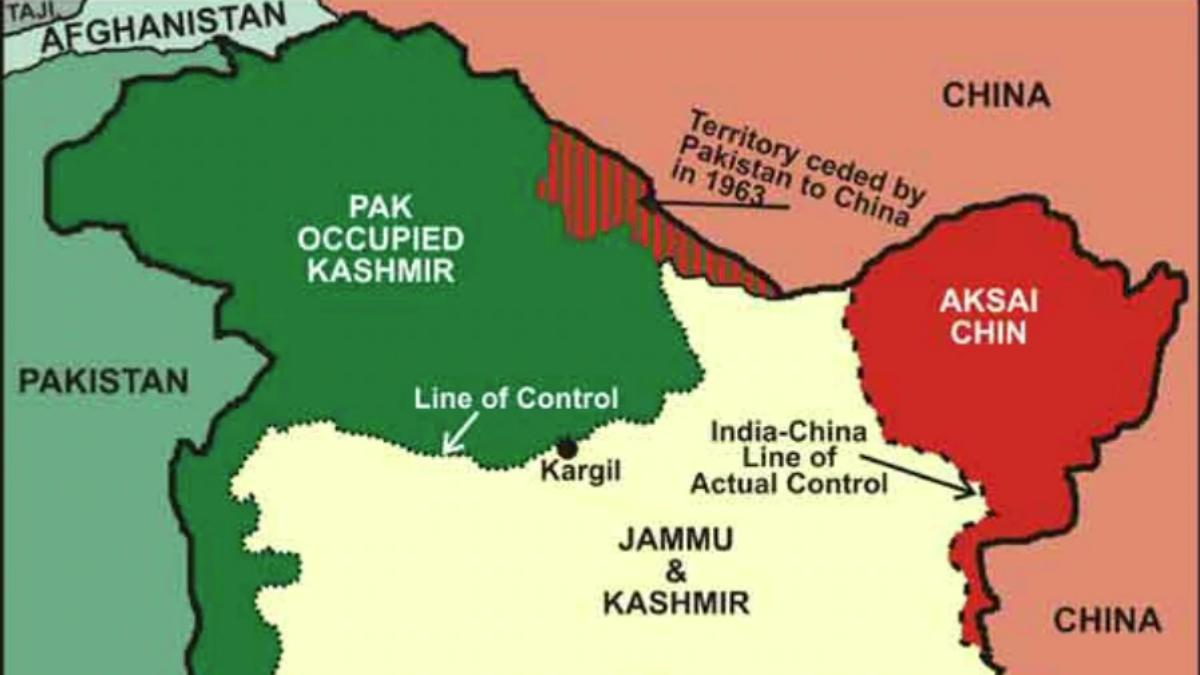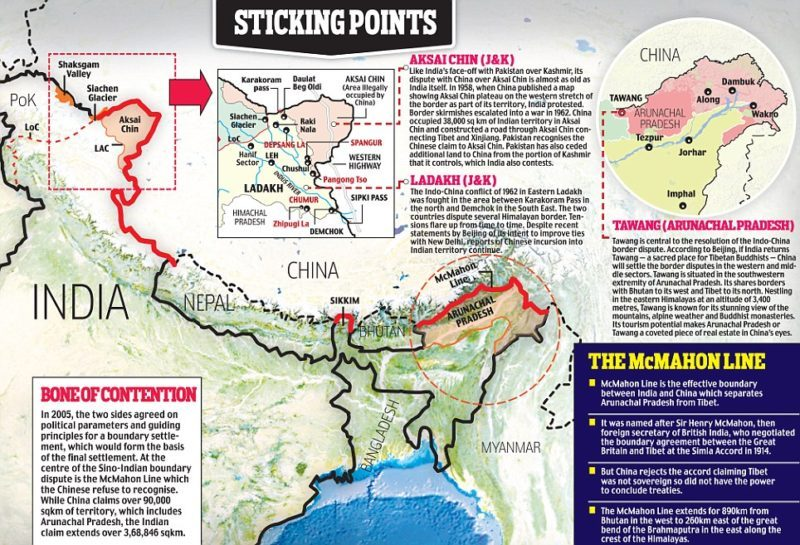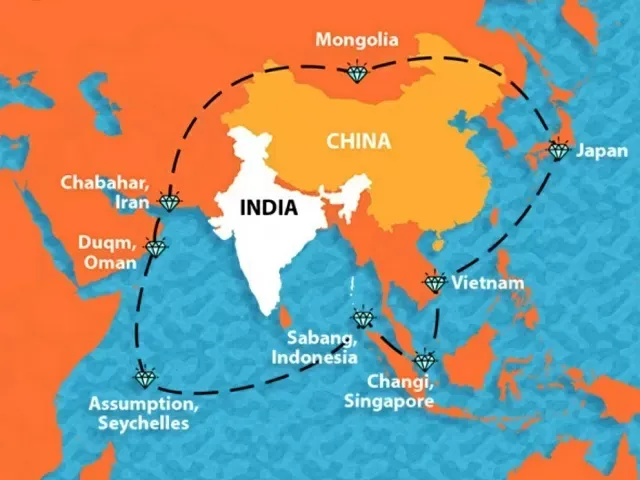International Relations
India Rejects China’s Claim Over Arunachal Pradesh
- 12 Apr 2024
- 11 min read
For Prelims: India-China Dispute, Tibet, China-Pakistan Economic Corridor (CPEC), Line of Actual Control (LAC), 1962 Sino-Indian War.
For Mains: India-China Dispute, Shifting International Politics is Affecting India-China Relations, Way Forward.
Why in News?
Recently, China has renamed some places in Arunachal Pradesh, which India rejected stating that assigning “invented” names does not alter the reality that the state “is, has been, and will always be” an integral part of India.
- The Chinese Ministry of Civil Affairs released the fourth list of standardised geographical names in Zangnan, the Chinese name for Arunachal Pradesh, which Beijing claims as part of south Tibet,.
- In April 2023 too, India had reacted sharply when China released the third list of standardised names of 11 places in Arunachal Pradesh.
What is the Border Dispute between India and China?
- Background:
- The India-China border dispute refers to the long-standing and complex territorial disputes along their shared border of 3,488 kilometres.
- The main areas of dispute are Aksai Chin, located in the western sector, and Arunachal Pradesh, in the eastern sector.
- Aksai Chin: China administers Aksai Chin as part of its Xinjiang region, while India considers it part of its UT of Ladakh. The region holds strategic significance due to its proximity to the China-Pakistan Economic Corridor (CPEC) and its potential as a military route.
- Arunachal Pradesh: China claims the entire state of Arunachal Pradesh, referring to it as "South Tibet". India administers this region as a northeastern state and considers it an integral part of its territory.
- No Clear Demarcation: The border between India and China is not clearly demarcated throughout and there is no mutually agreed Line of Actual Control (LAC) along certain stretches. LAC came into existence after the 1962 Indo-China war.
- The India-China border is divided into three sectors.
- Western Sector: Ladakh
- Middle Sector: Himachal Pradesh and Uttarakhand
- Eastern Sector: Arunachal Pradesh and Sikkim
- The India-China border is divided into three sectors.
- Military Standoffs:
- 1962 Sino-Indian War: The border dispute has led to a number of military standoffs and clashes, including the 1962 Sino-Indian War. Both the countries have made efforts to manage the tensions, with various agreements and protocols aimed at maintaining peace along the border.
- Recent Faceoffs: Since 2013, there have been heightened frequency of serious military confrontations between India and China along the Line of Actual Control (LAC).
- The most serious recent episodes of conflict were the 2017 standoff in Doklam region, in Galwan Valley in Ladakh in 2020 and in Tawang in Arunachal Pradesh in 2022.
How is India Responding to China's Aggressive Measures?
- Global Strategic Alliances: India actively engages with like-minded nations to collectively address China's influence in the Indian Ocean Region.
- QUAD: All four member nations find a common ground of being democratic nations and also support the common interest of unhindered maritime trade and security.
- I2U2: It is a new grouping of India, Israel, the USA, and the UAE. Forming alliances with these countries strengthens India's geopolitical standing in the region.
- India-Middle East-Europe Economic Corridor (IMEC): Launched as an alternative trade and connectivity corridor to China's BRI, IMEC aims to strengthen India's presence in the Arabian Sea and the Middle East.
- International North-South Transport Corridor (INSTC): INSTC, formed by India, Iran, and Russia, spans 7,200 km, linking the Indian Ocean, Persian Gulf, and Caspian Sea. With Chabahar Port as a key node, it strategically counters China, providing an alternative to CPEC's Gwadar port.
- India’s Necklace of Diamonds Strategy:
- In response to China's String of Pearls strategy, India adopted the Necklace of Diamonds strategy, emphasising the encirclement of China by enhancing its naval presence, expanding military bases, and strengthening diplomatic ties with regional nations.
- This strategy aims to counter China's military network and influence in the Indo-Pacific and Indian Ocean regions.
- In response to China's String of Pearls strategy, India adopted the Necklace of Diamonds strategy, emphasising the encirclement of China by enhancing its naval presence, expanding military bases, and strengthening diplomatic ties with regional nations.
- Infrastructure Projects Along Borders:
- India has been actively enhancing its border infrastructure to strengthen its position along the India-China border.
- The Border Roads Organisation (BRO) has completed 90 infrastructure projects along the India-China border, worth Rs 2,941 crore.
- As of September 2023, 36 of these projects are in Arunachal Pradesh, 26 in Ladakh, and 11 in Jammu and Kashmir.
- Cooperation With Neighbors:
- India is actively engaging in regional partnerships with neighbouring countries to mitigate Chinese influence.
- Recently, India has supported the development of the Gelephu mindfulness city in Bhutan.
- Furthermore, India has strengthened ties with Nepal through a recent power pact signed during the visit of India’s External Affairs Minister to Kathmandu.
- In 2024, the two countries signed a bilateral agreement for the export of 10,000 MW of power over the next 10 years.
- They also inaugurated three cross-border transmission lines, including the 132 kV Raxaul-Parwanipur, 132 kV Kushaha-Kataiya, and New Nautanwa-Mainahiya lines
- These efforts underscore India's strategy of fostering cooperation with neighbouring nations to bolster regional stability and reduce Chinese influence in the area.
- India is actively engaging in regional partnerships with neighbouring countries to mitigate Chinese influence.
What have been the Previous Efforts to Settle Indo-China Border Disputes?
- Shimla Agreement of 1914:
- To demarcate the boundary between Tibet and North East India, a convention was held at Shimla in 1914, representatives of all three i.e. Tibet, China, and British India.
- After the discussion, the agreement was signed by British India and Tibet but not by the Chinese officials. Presently India recognizes but China rejected both the Shimla agreement and the McMahon line.
- Panchsheel Agreement of 1954:
- The Panchsheel doctrine clearly indicated the willingness to ‘Respect each other’s sovereignty and territorial integrity’.
- China initially accepted the Panchsheel principles, and the agreement served as a basis for bilateral relations between the two countries. However, over time, the Panchsheel Agreement faced challenges, especially during the Sino-Indian War of 19621.
- The Agreement on the Maintenance of Peace and Tranquility:
- It was signed in 1993, which called for a renunciation of the use of force, recognition of the LAC, and the resolution of the border issue through negotiations.
- The agreement laid the groundwork for stability and security in border areas, but tensions persisted.
- China accepted this agreement, but their effectiveness varied over time due to changing geopolitical dynamics and occasional border tensions
- The Agreement on Confidence Building Measures in the Military Field along the LAC:
- It was signed in 1996, which laid down pledges on non-aggression, prior notification of large troop movements, and exchange of maps to resolve disagreements over the LAC.
- Both countries agreed this agreement, aiming to prevent accidental escalations and improve communication between the two countries
- The Border Defence Cooperation Agreement (BDCA):
- It was signed in 2013 following the Depsang Valley incident. It aimed to prevent incidents like the Depsang Valley face-off and enhance mutual understanding.
- Despite the BDCA, tensions along the India-China border have persisted, and incidents continue to occur. However, the agreement remains an important framework for managing border-related issues and maintaining peace in the region.
Way Forward
- India needs to invest in upgrading border infrastructure, including roads, bridges, airstrips, and communication networks, to bolster mobility and response capabilities for Indian forces.
- There is also a need to invest in modernising the armed forces with advanced equipment, technology, and surveillance capabilities to effectively monitor and respond to border incidents.
- It is important for India to fortify alliances with like-minded nations and regional organisations that share concerns regarding China's assertiveness in territorial disputes.
- Engage in intelligence-sharing, joint military exercises, and coordinated responses to regional challenges.
- India shall make more efforts to diversify economic ties to reduce reliance on China and bolster economic resilience.
- Explore trade agreements and partnerships with countries offering alternative markets and investment opportunities.
|
Drishti Mains Question: Q: Examine the recent escalation in the India-China border dispute, focusing on China's renaming of places in Arunachal Pradesh and India's strategic responses. Q: Evaluate the effectiveness of historical and contemporary border dispute settlement mechanisms between India and China. |
UPSC Civil Services Examination, Previous Year Question (PYQ)
Prelims:
Q. Siachen Glacier is situated to the (2020)
(a) East of Aksai Chin
(b) East of Leh
(c) North of Gilgit
(d) North of Nubra Valley
Ans (d)
Mains:
Q. Border management is a complex task due to difficult terrain and hostile relations with some countries. Elucidate the challenges and strategies for effective border management. (2016)









